European Leader in Phase Change Material Heat Capacitors for Space Application
Advanced Phase Change Material heat capacitors engineered for the most demanding electronic systems/components, including those operating in space environments.
About Us
We design and manufacture high-performance PCM (Phase Change Material) heat capacitors—compact, passive thermal storage systems that ensure reliable temperature regulation where traditional radiators or active systems aren't viable, such as in satellites, launchers, planetary systems, and defense electronics.
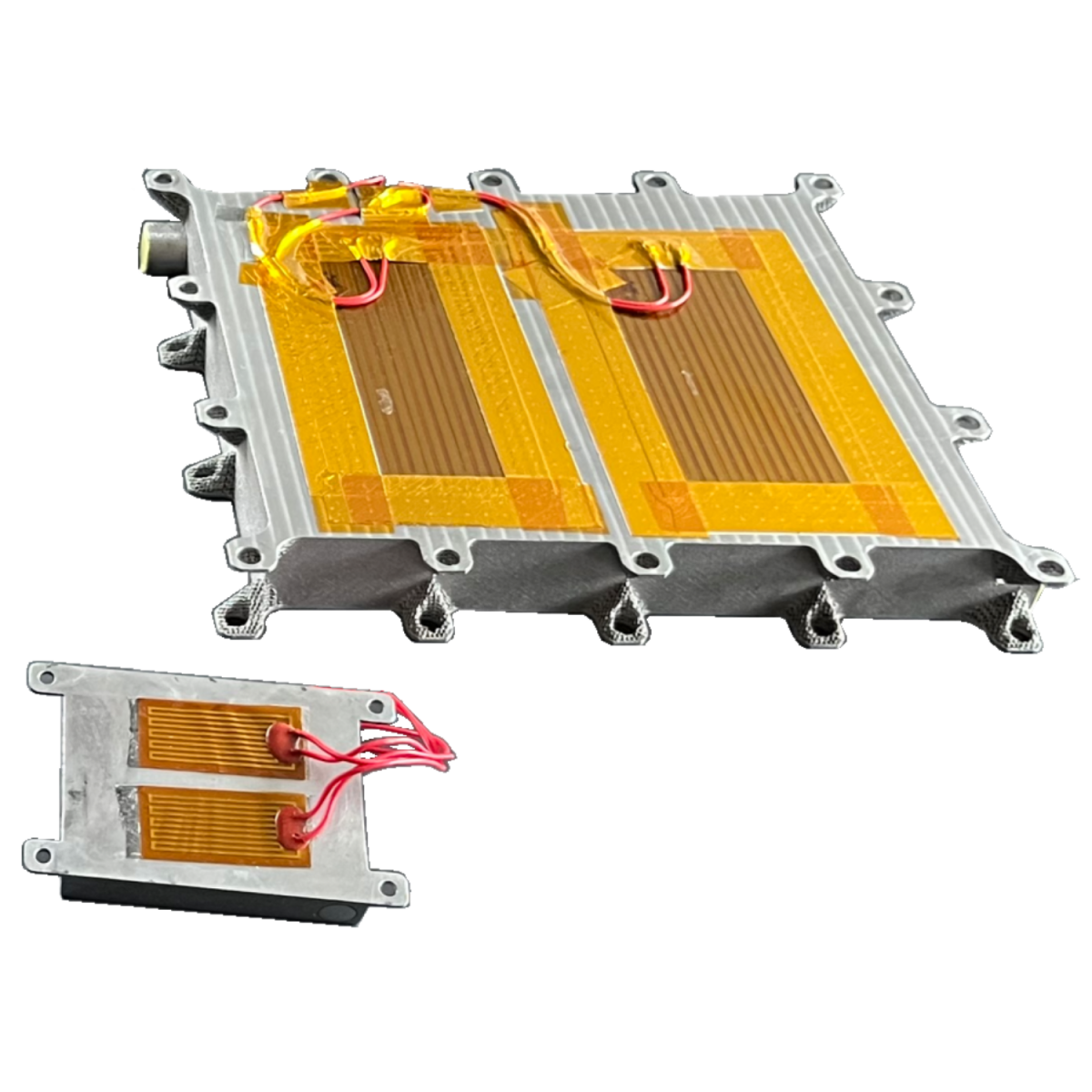
What is a Phase Change Material (PCM)?
Phase Change Materials (PCMs) are materials selected for their high latent heat, allowing them to absorb and release a significant amount of energy through phase transitions such as melting and solidifying within the relevant temperature range. They can be useful not only for single-use scenarios (e.g., brief launch missions, atmospheric entry) but also for in-orbit missions, including those with cycling or significant variations in internal dissipation or external fluxes.
What is a Phase Change Material Heat Capacitor?
A PCM capacitor is a device that stores and releases thermal energy through a phase change process. When the PCM undergoes melting, it absorbs heat from its surroundings, storing it as latent heat within its structure. Upon solidification, the PCM releases the stored heat back into the environment. This transition between solid and liquid states occurs at a specific temperature known as the phase change temperature or melting point. These characteristics enable PCM heat capacitors to function as thermal energy storage devices.
How does a Phase Change Material Heat Capacitor work?
The figure on the right depicts the typical temperature profile (illustrated by the green curve) of a unit equipped with a PCM capacitor subjected to a transient heat load (represented by the yellow curve). For comparison, the dashed red line shows the theoretical behaviour of the same unit without a PCM capacitor, which experiences a faster and higher temperature rise. Similarly, Figure 2 illustrates another typical use case of a PCM capacitor, showing the temperature profile of a unit subjected to a transient change in sink temperature. The green curve represents the thermal behaviour of the unit when coupled with a PCM capacitor, while the dashed black line illustrates the behaviour of the unit without any PCM capacitor.
When is a PCM capacitor specifically useful?
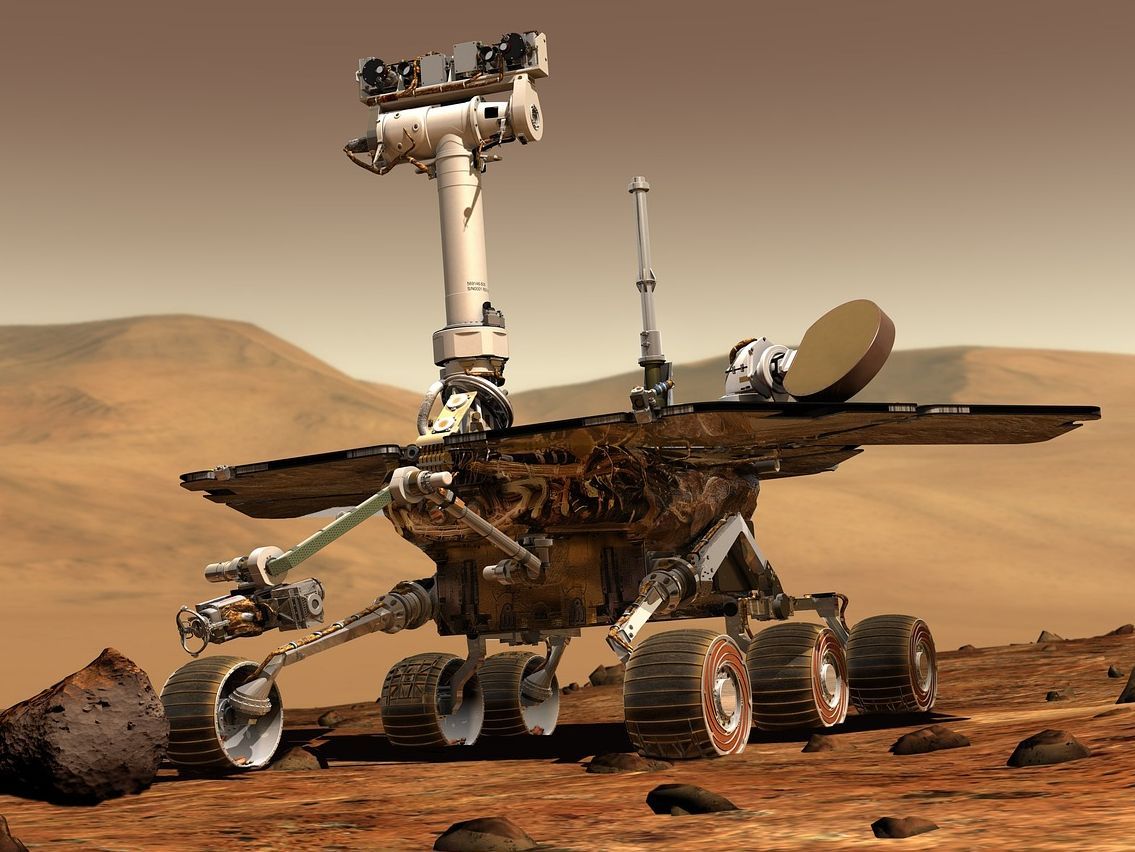
Experiences
Discover highlights of our PCM technology in major space missions, including Mars Rover, YPSat on Ariane 6, and more.
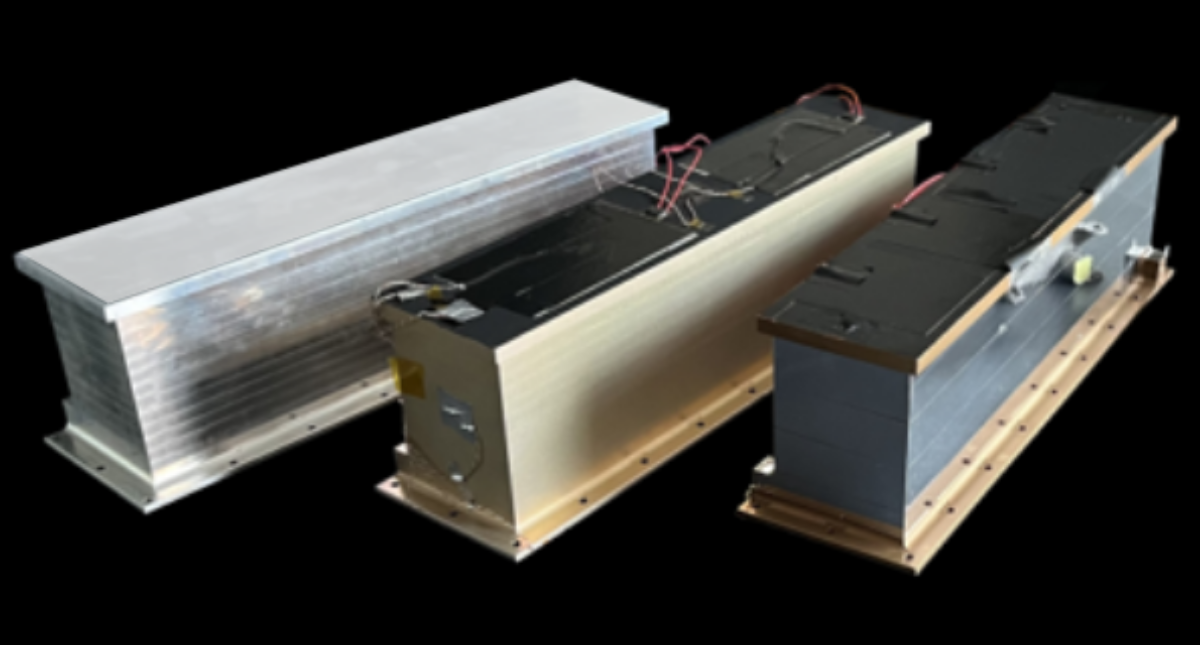
Our Products
Explore our custom-designed PCM solutions, engineered to meet specific mission needs across aerospace, defense, and advanced electronics.

Contact Us
Get in touch to discuss your project needs or learn how our PCM solutions can support your mission.
